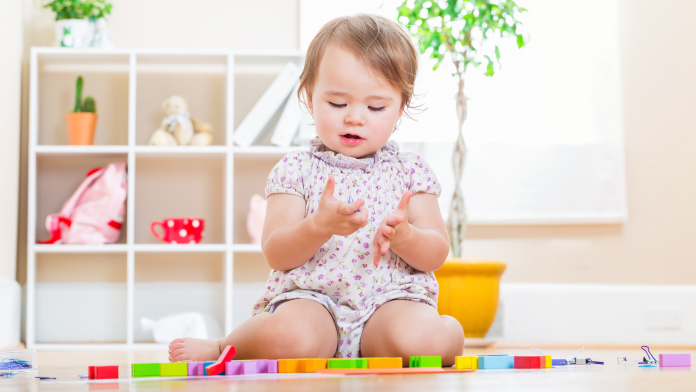Raising a child is full of amazing milestones and special achievements, from learning to walk to, of course, learning to talk. Your baby’s first words are an incredible step in their development, and perhaps even more importantly, a crucial turning point in your relationship with them.
Once a child learns to speak, even just a few words and broken phrases at a time, they become incredibly better at being able to express their needs, wants, and feelings. Being able to express themselves can lead to fewer tantrums and better behavior.
Learning to speak certainly doesn’t happen overnight, however, although it might seem like it. Your baby is learning about themselves and about the world around them every moment that they’re awake, and this includes language. Keeping this in mind, there are a few things you can do to help them to learn how to speak a little more quickly. So, want to know how to teach your baby to talk? Here are 5 tips for helping your little one talk.
Guided Play
When they aren’t eating or sleeping, babies are playing. It’s how they interact with the world and learn about it. This makes playing an integral part of their learning and development process, which means it’s a great opportunity to get your baby more familiar with language.
When they grab their favorite toy, talk to them about it. If it’s a shape, talk to them about shapes. If it’s an animal, talk to them about animals. Make sure to associate relevant language to whatever your baby is interested in, so they learn to make those connections. Describe the object to them, describe to them what they are doing, etc.
Talk a Lot
Exposure is a big part of helping your child learn to speak. Talk to them during every activity you do together: changing their diaper, going out for a walk, playing, cooking with them in the room, watching TV, anything and everything. The more they hear you communicate, the more comfortable they will be with the idea, and the more they’ll want to try it for themselves.
Don’t worry too much about making sure your vocabulary or messages are digestible enough for your baby when you’re just exposing them to as much language as possible. This part is more about getting them to hear and be comfortable with language than to pick up the exact phrases you’ll be using.
Listen to Music
Babies are really good at moving to music and grooving, they connect to the music and often, specifically, the lyrics as well. Especially with simpler songs like nursery rhymes, babies will start to sing along to the song just as a part of listening and enjoying it.
While they might not get the full lyrics, or even full words at first, this is a great way to start to get them comfortable with using language in a way that they enjoy. You can encourage them by singing along, too.
Name Things
Similar to guided playing, make sure to associate a name to everything your baby interacts with, and everything they see you interact with. Whether the object be a toy they’re playing with or the phone that’s ringing, putting labels on things helps teach your baby that things have names, and that we need to use these names to understand what we’re talking about.
Repetition is really important here. Apart from just naming things, try to have your child repeat back the name. Shortened sounds are good, too. If they’re playing with a ball and can’t say “ball” yet, “buh-“ or even just a “b-“ sound can be great signs that your baby is trying to link language to the object, even if they don’t have all of the tools ready quite yet.
Play to Their Interests
You should be naming and labeling everything that your baby comes across, but you should pay special attention to the things that interest them the most. It’s more motivating for everyone and in particular for your baby to learn about the things that they enjoy the most. If they’re really into animals, talk to them about animals while they play with their animal toys and while you watch animals on different shows and in different books. This will engage and encourage your child to use language to describe the animals perhaps more than they’ll be willing to use language for kitchen utensils.
By bringing your child into the world of language through the things that they enjoy, they can take this knowledge and begin to apply it in all of the other aspects of their surroundings, as well. Getting them to take that first step is often the hardest part.
We hope you benefited from this article on how to teach your baby to talk, here are other related articles you may also enjoy:
- Getting Your Kids Active When They Hate Sports
- 5 Tips for Teething Babies
- 3 Breastfeeding Must Haves For New Moms
- Dealing with Temper Tantrums


